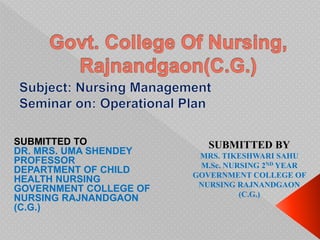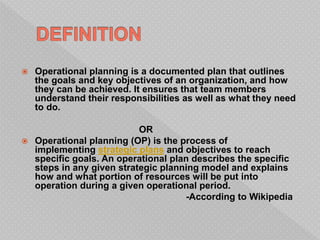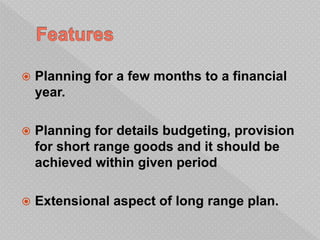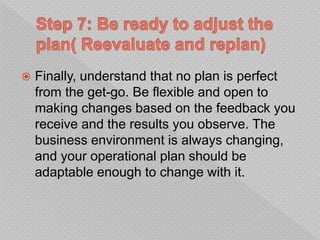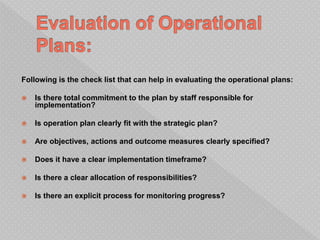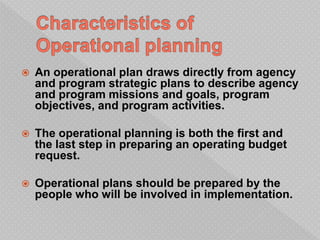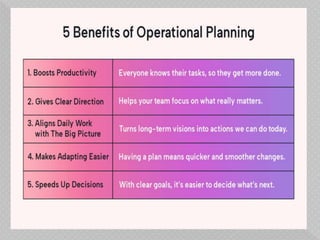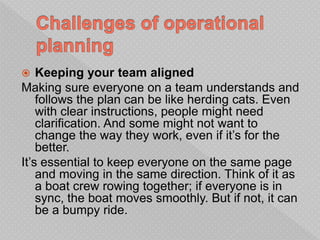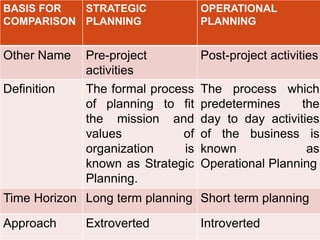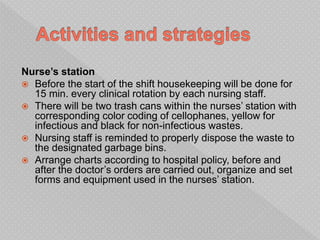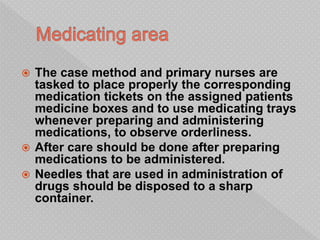The document discusses operational planning, emphasizing the importance of creating documented plans that outline goals and responsibilities within an organization for effective implementation of strategic objectives. It highlights the need for clear objectives, resource allocation, accountability, and regular progress monitoring to ensure alignment with broader organizational goals. Additionally, it covers the necessity for communication and adaptability in operational plans to address changing business environments.
